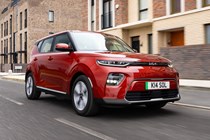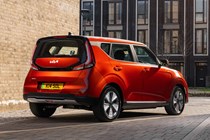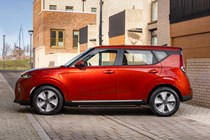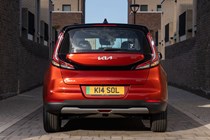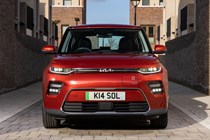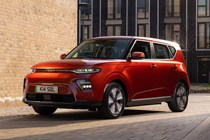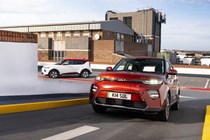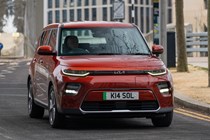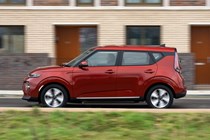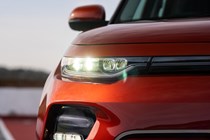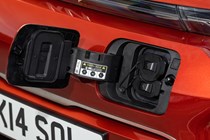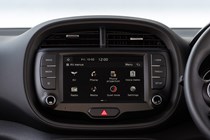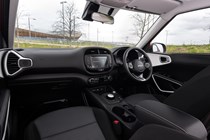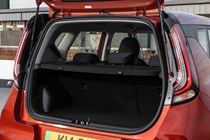Kia Soul engines, drive and performance
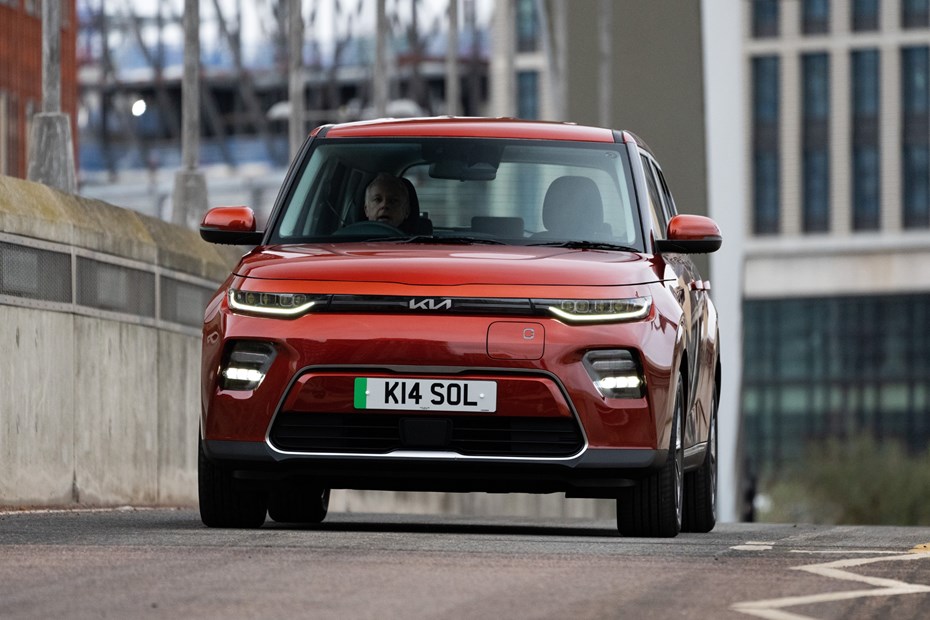
- Ample performance for top-spec car
- Entry-level model is still sprightly
- Sure-footed (albeit dull) handling
Electric motors
Kia appears twice in our round-up of the best electric cars on sale, so you’d expect the Soul EV to be a good performer. Unsurprisingly it is, partly because its electric motors and battery packs are shared with other great EVs from across the Hyundai Group such as the Kia Niro EV and Hyundai Kona Electric.
The Soul EV is available with two powertrains. The entry-level Urban model features a 39.2kWh battery pack and 141hp electric motor which Kia says can sprint from 0–62mph in 9.9 seconds and hit a top speed of 97mph. The more expensive Explore variant has a larger 64kWh battery pack and a 204hp electric motor. It’s noticeably quicker in a straight line, taking just 7.9 seconds to sprint from 0–62mph. Top speed also climbs to 104mph.
However, both versions of the Soul produce the same amount of torque at 395Nm, so the difference in performance between the two cars is narrower than you’d expect. Both cars also accelerate quickly enough from rest to 30mph to embarrass some hot hatchbacks at the traffic lights.

Put your foot flat to the floor and both versions of the Soul EV will chirp their tyres, although Kia has engineered a minor delay into the throttle that’s intended to give it slightly less immediate response. It works, too – and driving this car is a relaxing experience in and out of town.
Keep your foot buried in the carpet and you’ll find that performance tails off the faster you go. We tested the entry-level Soul EV off the public roads at Millbrook Proving Grounds and found that it accelerated strongly up to 70mph, but it started to labour after that.
Neither version of the Soul is designed to be driven quickly, though – especially not down windy B-roads. Both are surprisingly happy on the motorway, in fact. Their huge torque figures also mean they have plenty of pushing power in reserve for overtaking.
What’s it like to drive?
- Tight and composed handling
- Lightweight controls
- Not particularly exciting
Looking at the Soul EV’s boxy shape and slab sides, you’d be forgiven for expecting it to be a roly-poly handler. However, because the heavy battery pack is mounted low down in the car’s chassis, it’s surprisingly composed through the corners.
The steering system is intentionally light. It’s accurate too, which makes it easy to place the car on the road. However, there isn’t much feedback of the road surface through the wheel, which leaves a lot to be desired for keen drivers. But this is absolutely fine – most drivers will appreciate the Soul being easy to drive in town rather than bemoaning its lack of finesse down a twisting B-road.
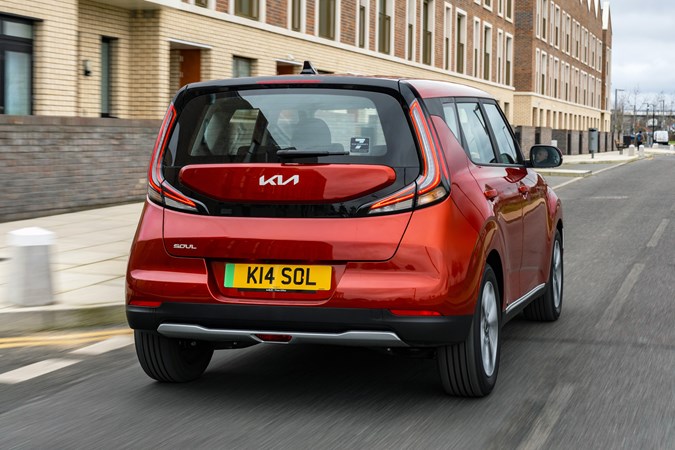
Ride quality is good for the most part. There’s a bit of high-speed patter and the suspension can get a unsettled when passing over sudden bumps or consistently rough tarmac. It’s great on a freshly resurfaced road, but a little jumpy on the sort of broken surfaces you’ll find in the UK.
Drivers can choose from four drive modes called named Eco, Eco+, Normal and Sport. In our experience, it’s best to stick with Normal. Sport mode sharpens up the throttle response by dials in a heap of artificial steering wheel which feels cloying and unnatural. Eco and Eco+, meanwhile, reduce performance to improve efficiency. They make the Soul EV feel dead and lumpen, though.


